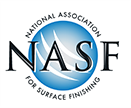CARB Issues Revised Deadlines for Hexavalent Chromium Transition
NASF offers an update on the latest developments with the California Air Resources Board proposed rules for hex chrome phase-out.
The California Air Resources Board (CARB) has issued its draft proposed regulatory language and held its Technical Working Group Meeting #5 in late May regarding its new rulemaking to transition hexavalent chromium plating to trivalent chromium. CARB indicated that it is now looking at the following deadlines for transitioning to trivalent chromium:
- July 1, 2024 for decorative chromium plating,
- July 1, 2028 for functional chromium plating, and
- July 3, 2033 for chromic acid anodizing
NASF, its members and expert industry representatives have voiced multiple concerns with the rule, including:
- CARB’s regulatory deadlines are very aggressive and unrealistic;
- the proposed rule is technologically and economically infeasible;
- the market does not accept trivalent chromium for many applications;
- efforts are misdirected in focusing on eliminating hexavalent chromium emissions from an industry that represents less than one percent of total hexavalent chromium emissions;
- substantial adverse impacts on defense and aerospace applications; and
- the potential devastating economic impact on the plating industry in California as well as critical supply chains and the economy in California more broadly.
At this time CARB is not looking at any other requirements for any other type of hexavalent chromium processes, but may look at these processes at a later date. CARB officials indicated that they welcome comments on the draft regulatory language for the rule, particularly on the issues that NASF and industry representatives have raised concerns. The schedule for completing the rule has been extended approximately six months with a final rule planned for mid-2022.
NASF California Chapters in the meantime continue a major letter-writing campaign to CARB members, state legislators, and customers regarding the significant negative impact this rule will have on surface finishing in California and the California economy. In addition, NASF is also reaching out to customers in several key supply chains, including defense, aerospace and automotive, to support the industry’s efforts on this rule.
NASF and its California Chapters will also continue working with state officials and industry partners to develop a rule that is protective of human health and the environment and is technologically feasible and economically sustainable. For more information on this rulemaking, please contact Jeff Hannapel with NASF at jhannapel@thepolicygroup.com.

This update is courtesy of the National Association for Surface Finishing (NASF). For more information or to become a member, visit nasf.org.
Related Content
-
The Future of Hard Chrome: Pioneering Innovations for Sustainable Solutions
Although useful, chromic acid and other compounds that contain hexavalent chromium ions are highly toxic and carcinogenic. However, one company has developed an alternative for the hard chrome process that achieves thick, conformal coatings with wear and fatigue resistance comparable or superior to hexavalent chromium-based systems.
-
Trion Coatings Announces Consultation Agreement With Brad Durkin
Industry veteran Brad Durkin to aid in SAFEChrome market integration for Trion Coatings, a leader in providing alternatives to hexavalent chromium use in decorative and functional applications.
-
Trivalent Chrome Overview
As the finishing industry begins to move away from the use of hexavalent chromium to trivalent chromium, what factors should finishers consider as they make new investments? Mark Schario, chief technology officer for Columbia Chemical offers a helpful overview of this complicated topic.















